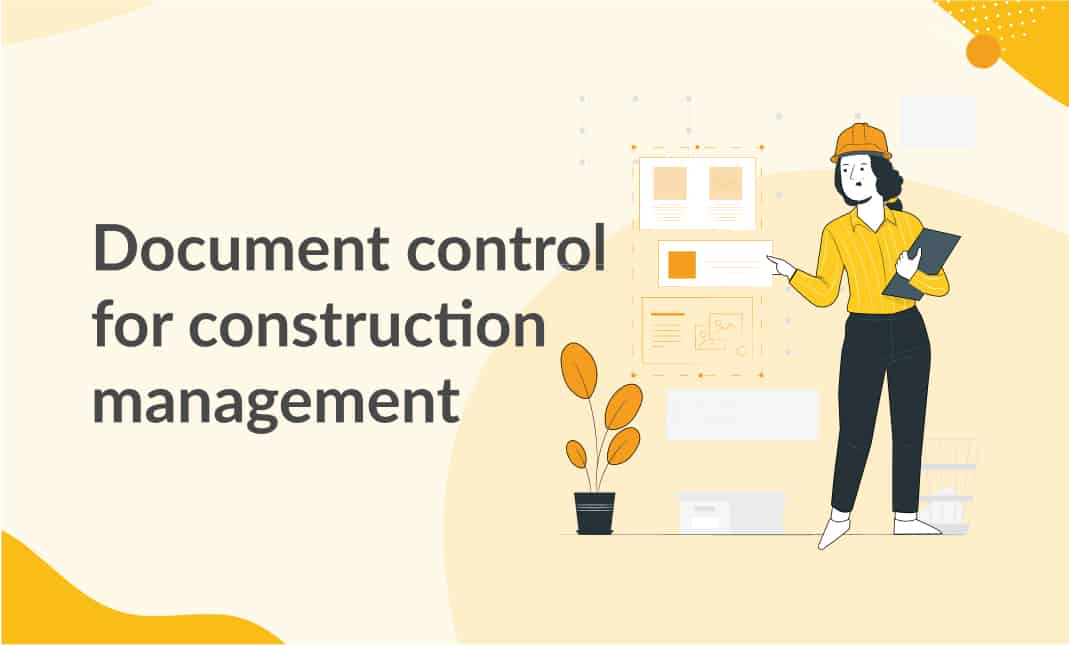Browsing Complexity: Exactly How Construction Document Management Software Program Can Help
Browsing Complexity: Exactly How Construction Document Management Software Program Can Help
Blog Article
Optimizing Job Collaboration: Engineer's Finest Practices in Construction Document Administration
In the complex realm of building projects, the reliable monitoring of building and construction files stands as a foundation for success. Designers, with their careful interest to detail and ingenious layout services, are entrusted with orchestrating a harmony of stakeholders, timelines, and sources. In the middle of this intricacy exists a critical inquiry: just how can designers enhance partnership procedures to improve job results? By checking out essential techniques such as leveraging cloud-based systems, establishing robust interaction procedures, and guaranteeing information security, designers can elevate their paper administration techniques to new heights.
Leveraging Cloud-Based Systems
Leveraging cloud-based platforms is a basic approach for modern-day engineers in maximizing construction record management processes. By transitioning from standard paper-based systems to shadow remedies, engineers can streamline collaboration, boost document accessibility, and boost total task efficiency. Cloud-based platforms offer engineers the capacity to shop, share, and update construction papers in real-time, making certain that all team members have accessibility to the most current information no matter their area. This accessibility promotes smooth interaction and coordination among task stakeholders, causing less mistakes and delays in the building and construction process.
Moreover, cloud-based systems provide a safe and secure setting for keeping sensitive task info, providing encryption, normal back-ups, and individual consent settings to secure data honesty. Designers can also gain from the scalability of cloud options, allowing them to change storage capability and performance based on task needs. On the whole, leveraging cloud-based systems equips architects to maximize their construction file monitoring processes, driving better collaboration, effectiveness, and success in their tasks.
Carrying Out Variation Control Systems
Having developed the advantages of cloud-based systems in construction file administration, designers can currently boost their document control processes by executing Version Control Solution. Variation Control Equipment (VCS) are vital tools that track adjustments in records, ensuring that staff member are always working with the most recent and most exact information. By applying VCS, architects can maintain a centralized repository where all project documents are stored, enabling seamless partnership while decreasing the threat of mistakes and variation disputes.
This feature is especially important in building and construction jobs where design models and adjustments are common. This openness not just enhances liability however also assists in settling disagreements or discrepancies that might arise during the task lifecycle.
Establishing Interaction Methods
To ensure effective and effective project coordination, architects must establish clear and robust interaction methods within their construction record administration processes. This system could be a job monitoring software application, email threads, or cloud-based storage solutions.
Moreover, interaction methods must additionally consist of standards on exactly how to deal with conflicts, adjustment orders, and immediate problems that may emerge throughout the project lifecycle. Establishing a structured approach to interaction makes certain that all stakeholders get on the same web page, advertises openness, and inevitably adds to the successful conclusion of the building project.
Making Use Of BIM Software Program for Sychronisation
BIM software application plays an essential role in boosting sychronisation amongst job employee in the construction sector. Building Info Modeling (BIM) promotes cooperation by giving a central system where designers, designers, service providers, and other stakeholders can work with each other in a collaborated fashion. With BIM software program, job individuals can access and update a common model that contains in-depth details regarding the structure design, building components, and job timetables.

In addition, BIM software application enables real-time cooperation and communication amongst employee, no matter of view their physical place. Through cloud-based BIM platforms, job stakeholders can access the most up to date job info, track adjustments, and make educated choices quickly. On the whole, leveraging BIM software for control improves task effectiveness, performance, and eventually brings about successful task end results.
Ensuring Data Security and Conformity
In the realm of building record administration, guarding data stability and ensuring regulative conformity are critical factors to consider for architects and other job stakeholders. Engineers should apply robust safety steps to protect sensitive task information from unauthorized accessibility or breaches. Using safe and secure cloud storage space options with security protocols and gain access to controls can assist minimize threats connected with data burglary or loss. On a regular basis updating software application and systems, carrying out protection audits, and giving staff training on data safety and security finest methods are important actions in keeping a safe and secure setting for building and construction document management.

Verdict
To conclude, engineers can optimize job collaboration in building record management by leveraging cloud-based systems, implementing variation control systems, establishing interaction methods, using BIM software program for coordination, and making sure information security and compliance. These ideal practices aid streamline website here the building and construction procedure, enhance communication amongst project stakeholders, and improve efficiency in task shipment. By complying with these guidelines, engineers can effectively manage building records and facilitate successful job results.
Via BIM software program, project participants can access and upgrade Your Domain Name a common version that has detailed information regarding the building style, building elements, and project schedules.
With cloud-based BIM platforms, job stakeholders can access the newest job info, track modifications, and make notified decisions quickly - construction document management. In general, leveraging BIM software program for coordination enhances task effectiveness, performance, and inevitably leads to effective job results
In conclusion, designers can optimize project cooperation in building and construction record administration by leveraging cloud-based platforms, executing version control systems, developing interaction methods, making use of BIM software program for coordination, and ensuring information protection and conformity. These best practices aid streamline the building and construction process, improve interaction among project stakeholders, and boost effectiveness in project distribution.
Report this page